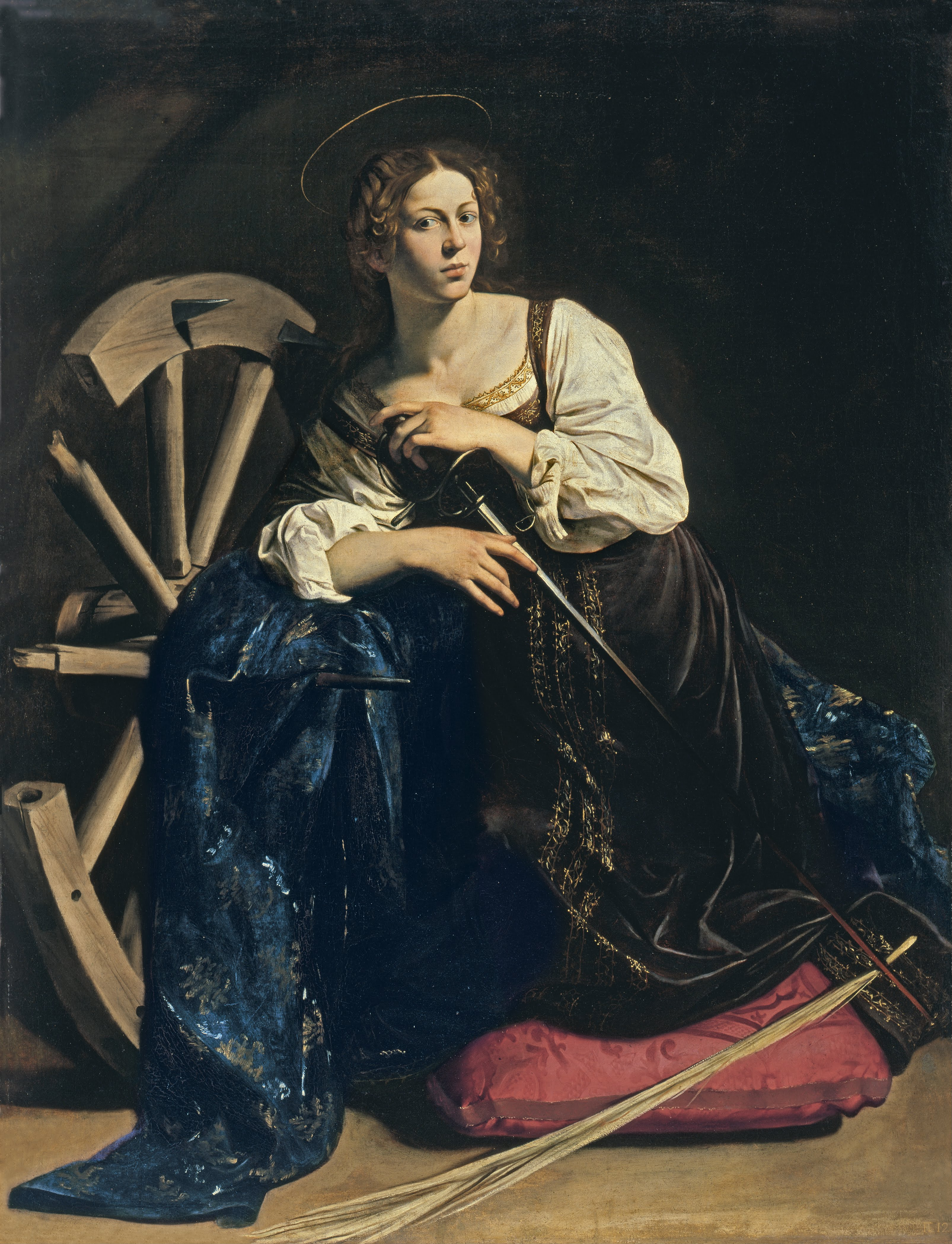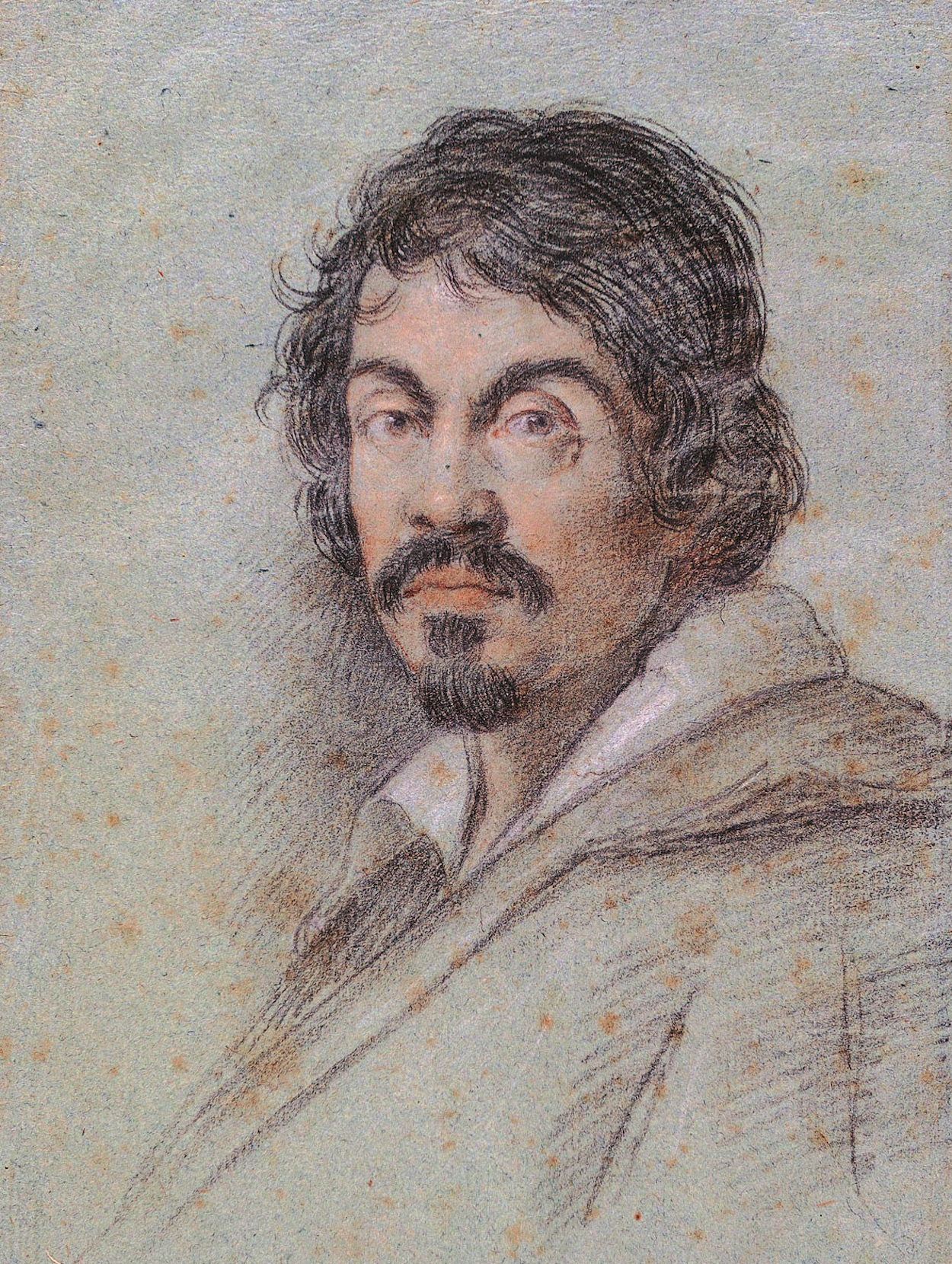This painting was almost certainly commissioned in Rome by Caravaggio's first patron, Cardinal Francesco Maria del Monte. Captured in a strikingly natural pose, the figure of St Catherine has been identified as Fillide Melandroni, a celebrated courtesan of the time. Richly dressed in robes befitting a princess, and kneeling on a cushion, she gazes out at the viewer surrounded by the attributes of her martyrdom: the breaking wheel, the sword with which she was beheaded and the martyr's palm. The dramatic lighting of the scene creates a chiaroscuro effect characteristic of Caravaggio, whose approach to light and volume - evident in this canvas - was to have considerable impact both in Italy and throughout Europe. Saint Catherine of Alexandria was a popular figure in Catholic iconography. She was of noble origin, and dedicated herself as a Christian after having a vision. At the age of 18 she confronted the Roman Emperor Maximus (presumably this refers to Galerius Maximianus), debated his pagan philosophers, and succeeded in converting many of them to Christianity. Imprisoned by the emperor, she converted his empress and the leader of his armies. Maximus executed her converts (including the empress) and ordered that Catherine herself be put to death on a spiked wheel. The wheel reportedly shattered the moment Catherine touched it. Maximus then had her beheaded. She became patron saint of libraries and librarians, as well as teachers, archivists, and all those associated with wisdom and teaching, and all those whose livelihoods depended upon wheels. The year of her martyrdom was traditionally held to have been 305, (the year of a major persecution of Christians under Galerius), and her feast day was celebrated on 25 November. In 1969 the Church, persuaded by the overwhelming opinion of historians that Catherine had probably never existed, removed her from the calendar of saints; by 2002, while the historians had not changed their minds, the Church had, and she was reinstated. Her qualities are supposed to be those of beauty, fearlessness, virginity, and intelligence.
See you tomorrow:)


 Caravaggio
Caravaggio